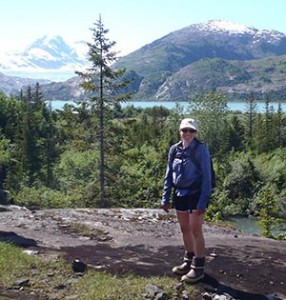By Lindsey Cassidy
Kodiak Middle School Teacher

The name Prince William Sound causes ominous memories of my childhood in Kodiak to reverberate in my brain. For many years, the name was synonymous with dirty words such as “oil spill,” “toxins,” and “Exxon Valdez.”
I was 5 years old and living in Kodiak on March 24, 1989. My memory does not know a time before the spill; the Exxon Valdez oil spill has always been an event my community suffered from and is still rebuilding from.
During the summer of 1989, weeks after the spill, my family camped on neighboring Woody Island. When my younger sister and I returned from the tide pools, oil covered our clothes and hands. The oil did more than just soil clothing: it oiled our communities, ecosystems, lands, seas, and our lives. Kodiak fishermen and women had families to feed and bills to pay, but Exxon took even longer to respond effectively to the disaster in Kodiak than its initial delayed response to the spill in the Sound. I rode on my father’s shoulders during the protest march held in Kodiak shortly after the spill as a public demonstration against Exxon’s ineffective response to the disaster. My parents had saved for their dream house, and suddenly found themselves wondering if it would be just a dream. For me, these events were inseparably linked to the name Prince William Sound.
After graduating from Kodiak High School, I left the island for college and later, rural teaching experience. I returned to Kodiak in 2012 to teach English and seek outdoor adventures. When an Alaska Geographic course was advertised to educate teachers on the culture, communities, history, and geography of the area via kayak camping, I jumped at the opportunity to learn more about this intriguing landscape of dichotomies that, in my mind, was Prince William Sound.
Day one, hour one, minute one in Prince William Sound, I was in love with the land and seascape. I began redefining the Sound into a place of resplendent waters and mountains. Instructors Tim Lydon from the U.S. Forest Service and Betsi Oliver from Alaska Geographic shared their knowledge and passion for this unique part of Alaska and kayaking its waters. Discussions focused on experiential education and place-based education; Prince William Sound is ideal for both of these approaches to education. Not one of the eight educators, myself included, left the area without considering how to connect our students to the beauty of Prince William Sound and foster a sense of stewardship.
Even though Kodiak is some distance away from the Sound and it took me until my third decade to visit the area, these two places are bound together through culture and history: The Alutiiq culture calls both Kodiak and Prince William Sound “home,” and the Exxon Valdez oil spill demonstrated that Kodiak is simply downstream from the Sound.
My takeaway from my week is to identify how I can link this place to my Kodiak Island students, how I can help students perceive its relativity to Kodiak so that they’re not waiting until their third decade to visit the turquoise waters and glacier-scoured peaks. To protect Prince William Sound from another devastating spill, and in effect all areas downstream, it is essential our students connect to the land as stewards. We need economic prosperity, but we also need healthy land and seas for sustainable economies, especially for our fishing towns. As a middle school English teacher, I am looking forward to refocusing my instruction and inviting students to engage with our local environment and culture through reading and writing. I look forward to fostering stewardship in coastal Alaska to keep tragedies like Exxon Valdez oil spill from being part of other childhoods. Places like Prince William Sound should be known for their beauty and significance, not for a tragedy caused by humans.
Editor’s note: Since 2013 the council has co-sponsored an Alaska Geographic and Chugach National Forest-led teacher expedition in Prince William Sound. Participating Alaska teachers travel by sea kayak focused on place-based learning. Along with nature study, the history of Exxon Valdez oil spill is one of the primary themes of the course, with excerpts from “The Spill” read each night. Teachers develop lessons for their students based on their experience in the Sound.